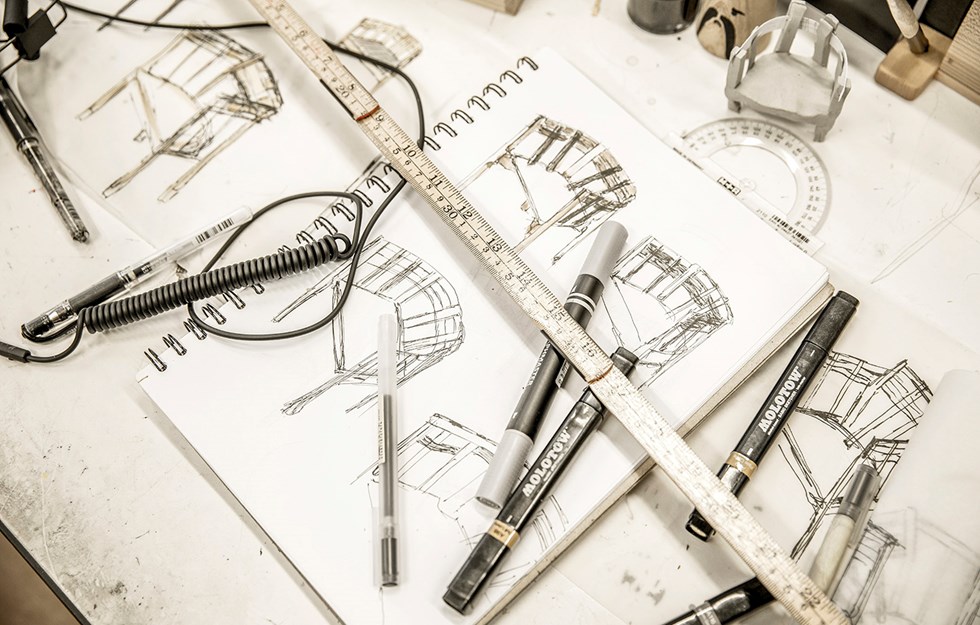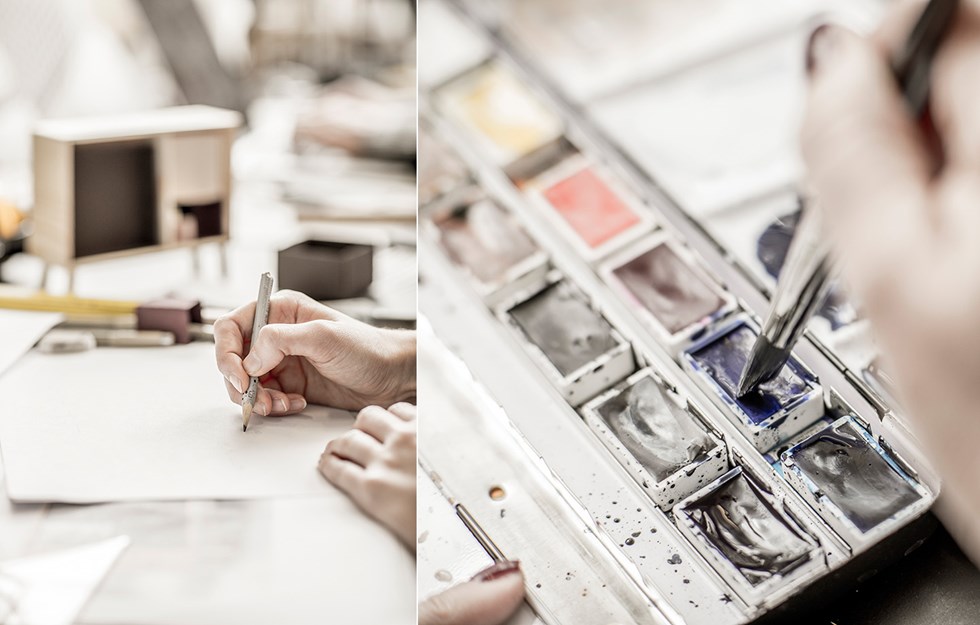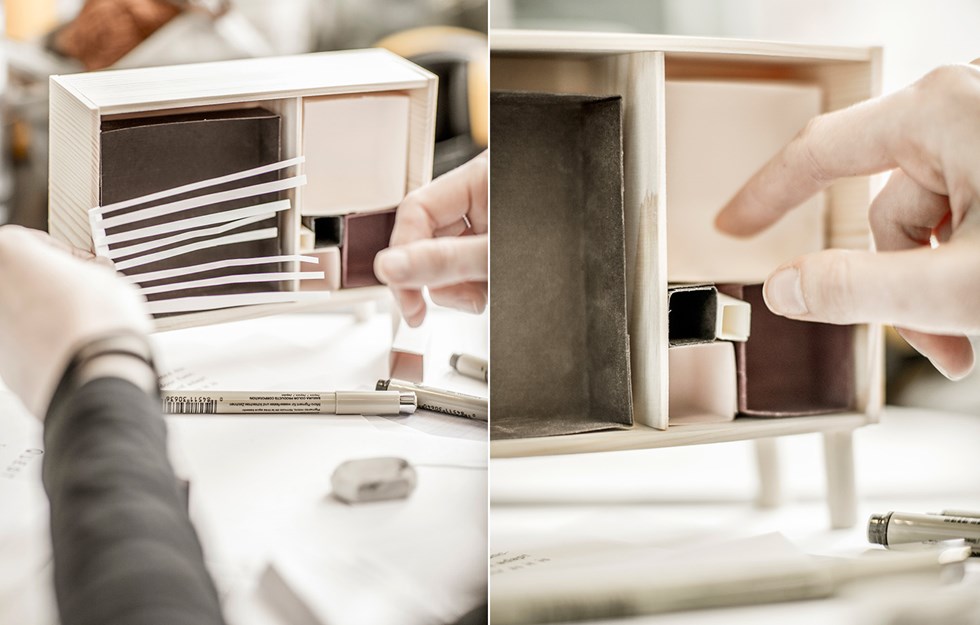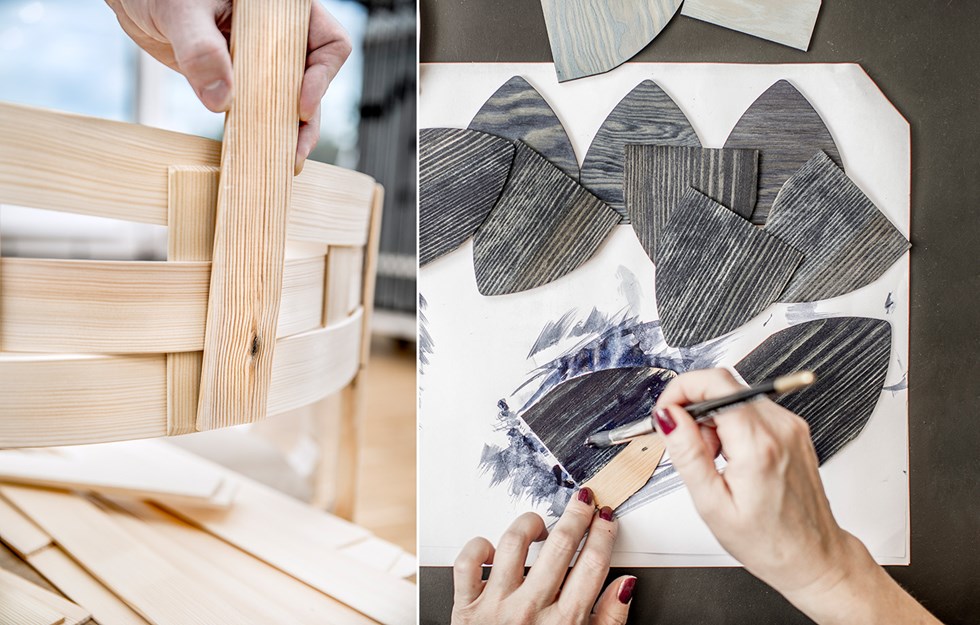Comments about the project
Here you can read some comments about the project from Leó Jóhannsson, Course director, Charlotte Dedye Apelgren, Director Interior and Design, and Kersti Sandin Bülow, Adjunct Professor of Design.
"A journey that opens up boundless opportunities"
Leó Jóhannsson
Course director – Furniture & Design Program,
Carl Malmsten Furniture Studies, Linköping University
Malmstens strives to include elements in its courses that give the school’s students a chance to practise using modern communication techniques and to operate at an international level. A well-educated furniture designer who graduates from this school takes away more than simply knowledge of design methods, a developed creative capacity and an insight into the Swedish furniture industry. International projects such as Design in Pine clearly show the boundless opportunities for graduates to practise their profession, wherever in the world they might like to work.
In spring 2015, Malmstens was contacted by Swedish Wood, which organized a study visit for a Chinese delegation comprising some of the country’s leading furniture manufacturers and designers. The study visit was the first step in a collaborative project between the Chinese furniture industry and the Swedish sawmill industry aimed at increasing the use of Swedish pine in the production of furniture in China.
Malmstens and Swedish Wood decided to take the collaboration one step further. A joint fact-finding mission to China in spring 2016 involved visiting two major Chinese furniture manufacturers that were interested in developing, producing and selling pine furniture on the Chinese market. But above all, they realised the value of Scandinavian design and the unique skill set that Malmstens’ students could bring to the companies.
This marked the start of the project Design in Pine, which also gave name to the fifth and final project course for the school’s third-year students in furniture design. The nine students were split into two groups, who were each set a design assignment by the respective furniture manufacturers, with a focus on Swedish pine and the Chinese market.
The course began with representatives from the Chinese furniture companies visiting Malmstens to introduce the students to Chinese interiors, furniture manufacturing, and to present the target groups for the project. In the autumn, renowned Chinese furniture designer Zhu Xiaojie also served as “designer in residence” at Malmstens, spending several months working amongst the students in the school’s workshops. Zhu Xiaojie’s credentials include founding and managing OPAL Furniture and Ouyaom and representing Wenzhou Furniture School. His lecture “How to turn a good design into a good business in China” inspired the students and showed examples of Chinese furniture that combines good design with commercial viability.
Then came the design process, with each student producing three concepts that were presented as mood boards. Once the companies had decided to proceed with one concept per student, work began on drawing up the outline plans. The results were presented to the companies, who chose one item of furniture per student to move forward with.
The nine prototypes arrived back in the middle of January 2017, having been manufactured by the Chinese companies to the students’ meticulous production designs. This brought the rewarding course to an end, but hopefully we have only seen the beginning of many more collaborations that embrace pine and design.
"Modern design takes Swedish pine to new heights"
Charlotte Dedye Apelgren
Director Interior and Design
Swedish Wood
Nature has always played a crucial role for designers, both as an inspiration and a provider of materials. In Sweden, interest in working with wood has ebbed and flowed over time, culminating in the 1970s pine craze, when furniture and accessories in untreated pine were the finest things you could adorn your home with.
Then came a long period when pine was gradually replaced with other materials. Now the tide has turned and as environmental awareness has grown, and the forest’s materials have made a major comeback and once again stepped into the limelight. Both in Sweden and internationally, we are now seeing modern design take pine to new heights.
Over the past few years, Swedish Wood has worked actively to develop new export markets for Swedish sawn wood products, having identified China as a highly interesting growth market. 2013 Sweden exported 400,000 cubic metres of sawn wood products to China, three times more than in the previous year. In 2016 exports from Sweden to China set a new record at around 800,000 cubic metres.
There is a trend in China for sustainable and eco-aware design with a Scandinavian touch. The country also has a growing middle class with substantial purchasing power and a positive attitude towards furnishing their homes with wood. The challenge has been to give them access to a new and attractive range of products made from Swedish pine.
The collaboration between the Chinese furniture companies, the students at Malmstens and Swedish Wood has opened up new opportunities to showcase the potential of pine. It remains an attractive, authentic and sustainable material full of possibilities, wherever in the world it is used.
"Design in Pine – a design process in translation"
Kersti Sandin Bülow
Adjunct Professor of Design
Carl Malmsten Furniture Studies, Linköping University
Participating in the Design in Pine project has taken considerable courage. Courage from the students, who have completed a major international design project within a very tight timeframe. Courage from the Chinese manufacturers to embrace the young Swedish designers’ creativity and professional integrity. It has been a journey that none of us have been on before. Together, we have roamed globally in a virtual world where the boundaries between spaces, locations and people have changed.
Approaching another country’s culture and design traditions with respect demands curiosity, knowledge and education. Design in Pine has provided a crash course in cross-cultural communication for the students. Through lectures on modern China and the lifestyle of young Chinese people, they have gained an understanding and a greater capacity to read cultural signals. The students have also read and discussed literature on Chinese philosophy, history, literature and art.
One key aspect of Design in Pine has been to aesthetically combine the very Swedish material of pine with attractive product design for young, urban Chinese furniture consumers. The outcome is products manufactured in China by local producers, for style-conscious Chinese people who appreciate modern Western design.
Drawing inspiration from and blending design elements from different cultures is a key creative force within design. It is easy to be captivated by other cultures’ aesthetic expressions and incorporate them as decorative elements in one’s own design work. Chinese culture contains aesthetic and symbolic design features that carry great value. Throughout the project, the students have been keen to respect these values. Symbols and features, both Chinese and Scandinavian, have been integrated into the designs – distinctive decorative features that serve to raise the quality of the furniture and make the design attractive.
A significant factor in the beginning of Design in Pine was to allow the students and company representatives to get to know each other over the course of a few days at Malmstens. The students took part in the companies descriptions of the lifestyle and living standards of the Chinese target group. They were also briefed in the companies’ production processes and how pine could be incorporated into these.
During their degree course in furniture design at Malmstens, the students are trained in a wide range of skills. There is a particular focus on the design process as a way of creating structure and quality from concept to finished product. A design assignment involves identifying, defining, planning and documenting a task, beginning with the creation of an inspirational mood board – a visual aid and a design palette.
When the initial ideas were presented via Skype, the manufacturers responded with both wonder and uncertainty. They had expected a presentation of numerous finished product ideas. In hindsight, we can see what an important function that initial presentation fulfilled, providing a visual design description to refer back to during the critical phases of the product development process.
Another challenge in Design in Pine was to meet via Skype for interpreted discussions on product development. These virtual meetings required careful preparation by everyone involved, and the students had to be patient in adapting to the situation. Considering the use of several interpreters in both Sweden and China, communication has worked surprisingly well. The time required for the interpreter’s translation created an easy pace in the conversation and created space to reflect and express oneself clearly.
Taking part in Design in Pine has been like swimming fast with no sight of land and no lifebuoy. It has sometimes been challenging, but for the most part it has been incredibly stimulating – an experience that has expanded the knowledge horizons of everyone taking part, both as individuals and in their professional capacity.




